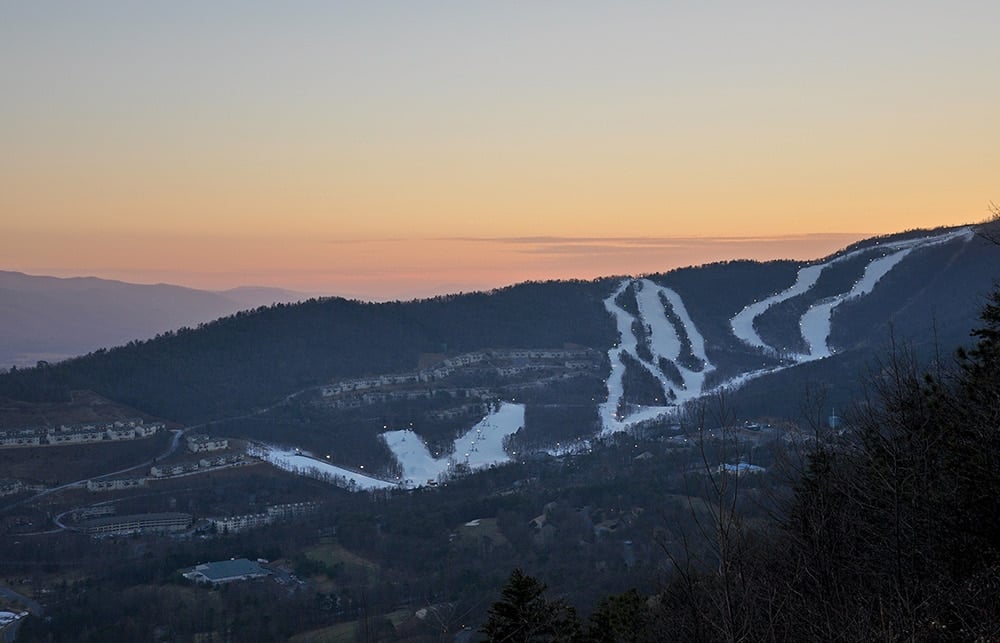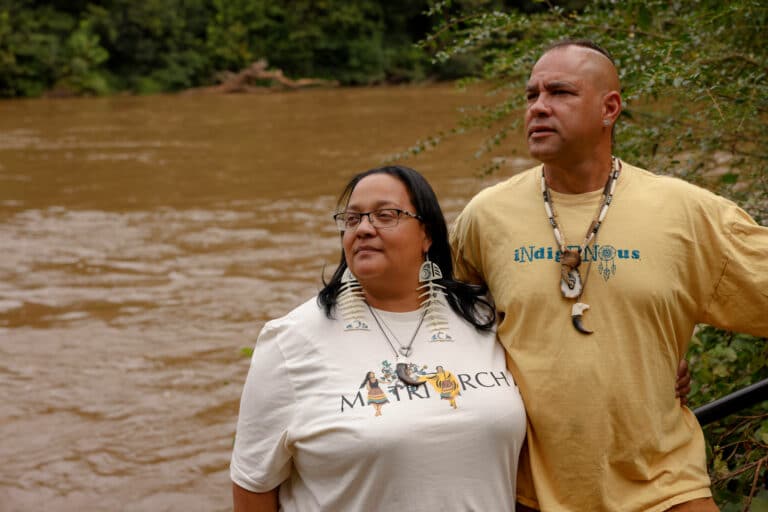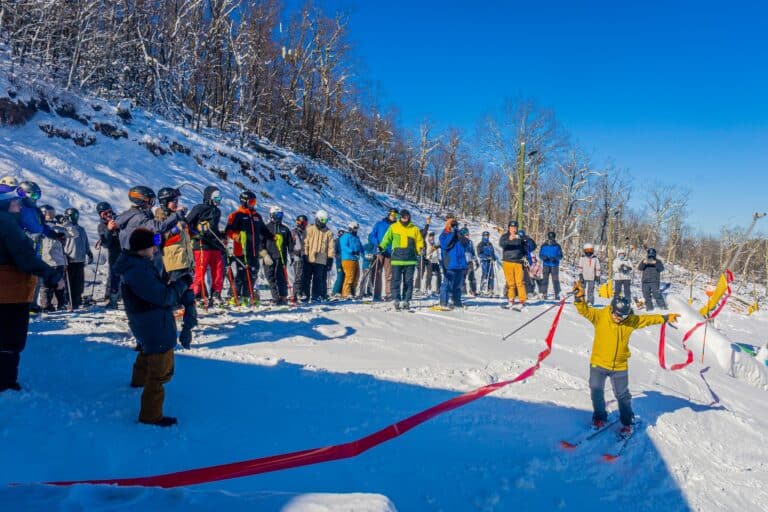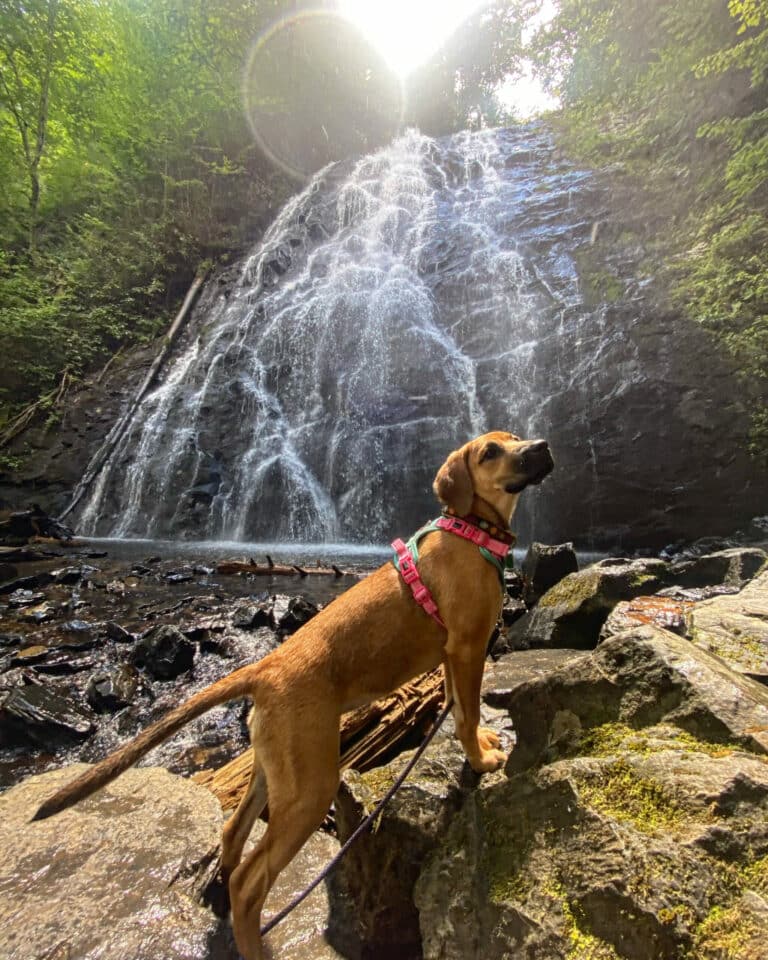COVID-19 blindsided regional snowsports resorts last spring. Here’s how they’re preparing for winter.
Kenny Hess sat in a conference room at Massanutten Resort surrounded by top-level staffers watching a television showing Virginia governor Ralph Northam’s live March 13 press conference. The mood went from grim to alarmed as schools and nonessential businesses were ordered to shut down for at least two weeks.
“It was so unprecedented,” says Hess, Massanutten’s director of sports and business operations, who has worked at the Harrisonburg-area resort since the early 1980s. Dealing with finicky weather and warm spells was par for the course. But this was different: The closure’s abruptness was blindsiding.
Trying to swiftly shutter operations proved a logistical and emotional nightmare. Though the end of the season was near, a run of cold weather had inspired plans to keep slopes open into early April. The resort relies on seasonal employees to clean lodges, operate lifts, and staff restaurants, gift shops, and rental facilities. Located in a college town, most were locals. But around 20 percent were workers from foreign countries using temporary H-2B visas.
“Suddenly I’m going around telling people they don’t have jobs,” says Hess. Some were counting on extra paychecks to pay bills. Others had to grapple with travel bans and restrictions.
Uncertainty loomed over full-time employees too. Mandatory stay-at-home orders were issued to last through early June on March 24. Was there going to be a mountain biking season? Would the waterpark, pool, and lake be able to open? “Everything was so up in the air,” says Hess. Trying to plan ahead felt futile.
But time went on and the picture got clearer. State officials released safety guidelines for sporting facilities, restaurants, hotels, and retailers. Phased re-openings began in mid-May. Massanutten’s mountain bike park opened a month later.
“Getting there required a ton of patience and constant adaptation,” says Hess. Ensuring visitor safety and complying with state regulations posed significant challenges. A lack of specificity in state guidelines meant constant communication with public health officials, other resorts, and industry trade associations. And finding workers was tough.
Luckily, Hess says the effort brought a silver lining. It was a trial run for what will invariably be the oddest ski season in modern history. Facing concerns about a winter resurgence of COVID-19, having some experience is a plus.
“Ski season is going to be very different this year,” says National Ski Areas Association spokesperson Adrienne Isaac. Her organization works with 470 U.S. ski areas across 37 states. She’s been helping them share ideas, pandemic-related best practices, and safety plans.
“There’s definitely going to be a degree of inconvenience,” says Isaac. But if resorts implement proper practices, she’s confident they can keep slopes open through the winter and ensure the safety of skiers and snowboarders.
Just how different is the 2020-2021 ski season going to look?
“It’s hard to tell,” says Isaac. That’s because, with no unified federal pandemic strategy, states have responded individually. Compliance and safety measures can vary significantly from place to place. For instance, New York currently imposes a 14-day quarantine for out-of-state visitors. Most Southeastern states, including Virginia and North Carolina, have lifted travel restrictions. Other states, including Maryland and Pennsylvania, urge travelers to observe a period of isolation.
Looking ahead, that worries resort managers like Hess. What if a state experiences an uptick in COVID-19 cases and reimposes travel constraints? “Keeping track of who’s coming from where and how we’re supposed to treat them would be very complicated,” he says.
Yes, pivoting to online-only systems for lift ticket purchases brings the ability to filter sales by geographic area. But should resorts ban homeowners from affected states too? Meanwhile, ambiguity in regulatory mandates adds further complication. The biggest of these gray areas is capacity limits for slopes.
In Virginia, attendance for outdoor entertainment venues has been capped at 1,000 people. But how should that number be interpreted when it comes to skiing?
“Is that per day, at any given moment, or what?” says Hess. How that question gets answered has major economic ramifications. Like most Southeast resorts, Massanutten’s success depends on busy weekends. A good Saturday features about 5,000 people on the slopes at any given moment. Cutting attendance by 80 percent would be hard to stomach, especially when you consider the operational realities of ski areas.
“Most locals and day-trippers buy passes for half-days or night skiing,” says Kimberley Jochl, vice president of Sugar Mountain Resort in North Carolina. Season passholders typically visit for a few hours at a time. Dividing the day into sections could provide a much-needed boost in sales.
These are the types of issues that Isaac, the National Ski Areas Association spokesperson, is trying to solve. To do it, she’s working to connect resort managers to one another as well as state officials.
State governments in the Southeast and Mid-Atlantic have yet to offer specific guidance for ski resorts, says Isaac. Interpreting blanket regulations leaves too much margin for error. “Which is why we’re working closely with public health officials to target gray areas and try to eliminate as much uncertainty as possible.”
In other parts of the East Coast, where skiing is a major economic driver, like Vermont, which is home to more than 25 ski resorts—Virginia has four; North Carolina, six—such discussions are well underway.
In 2018, the industry was the state’s second largest economic driver, generating more than $1 billion in wages and $391 million in tax revenue. According to Vermont deputy commerce director Ted Brady, the state has prioritized the creation of specific guidelines for social distancing and capacity restrictions, allowing ski areas to prepare for the upcoming season. Next comes a funding package to help smaller resorts adapt.
“They won’t survive the pandemic unless we give them some resources to do things differently,” Brady told the Vermont House Committee on Commerce and Economic Development. For instance, establishing heated winter tents for restaurants and day-lodge operations, as well as adapting new ticketing platforms and socially distanced line systems.
To survive the COVID-19 downturn, “we must have detailed new safety precautions that can be in effect throughout the entire winter,” said Rob Katz, CEO of Vail Resorts, in a September statement. The company manages 34 ski areas in North America and has lost more $200 million in revenue since the pandemic began.
“We do not want to be caught off guard, or find ourselves needing to make reactive changes,” Katz said. “Consistency and predictability for guests will be extremely important.”
Despite the ambiguities, some changes are certain.
One of them is pivoting to online-only ticket sales and eliminating walkup and open-date lift ticket purchases. The move will help resorts keep better track of visitors, maintain social distancing, and comply with capacity limits. “Some resorts may require season passholders to check in as well,” says Isaac. While Snowshoe Resort in West Virginia has no such plans, tighter rules in neighboring Virginia may force Massanutten to do so.
“Usually, passholders can walk up and hit the slopes right away,” says Hess. Depending on restrictions, “we might ask them to make advance reservations online, or through a new app. Alternatively, it could just be having someone scan passes at entry points.”
More certainties are masks and hand sanitizing. The former will be mandatory indoors, as well as in high-traffic areas like outdoor dining spaces and lift lines (luckily, a balaclava or raised neck-scarf will work for the latter). Sanitizing stations will be situated at entrances and exits to lodges, hotels, eateries, shops, bathrooms, and lifts. Most resorts will allocate additional sites for rentals and use computerized technology for contactless fittings. Lift lines will feature spacing markers and added attendants to ensure skiers and snowboarders maintain proper social distance while waiting. Lift rides pairing strangers won’t be optional.
Additional safety measures will likely include cashless transactions, expanded takeout and delivery options at restaurants, scheduled temperature checks for employees, sanitation regimens, and more.
“This ski season is going to be unlike any we’ve ever experienced, and we’re asking visitors for their understanding and patience,” says Kimberley Jochl, the Sugar Mountain Resort vice president. “In return, you can count on us to do everything in our power to help keep you safe and make skiing and snowboarding a reality throughout the winter.”
Cover Photo: New safety measures will be in place for skiers and snowboarders at Virginia’s Massanutten Resort (pictured above). Photo courtesy of Massanutten








